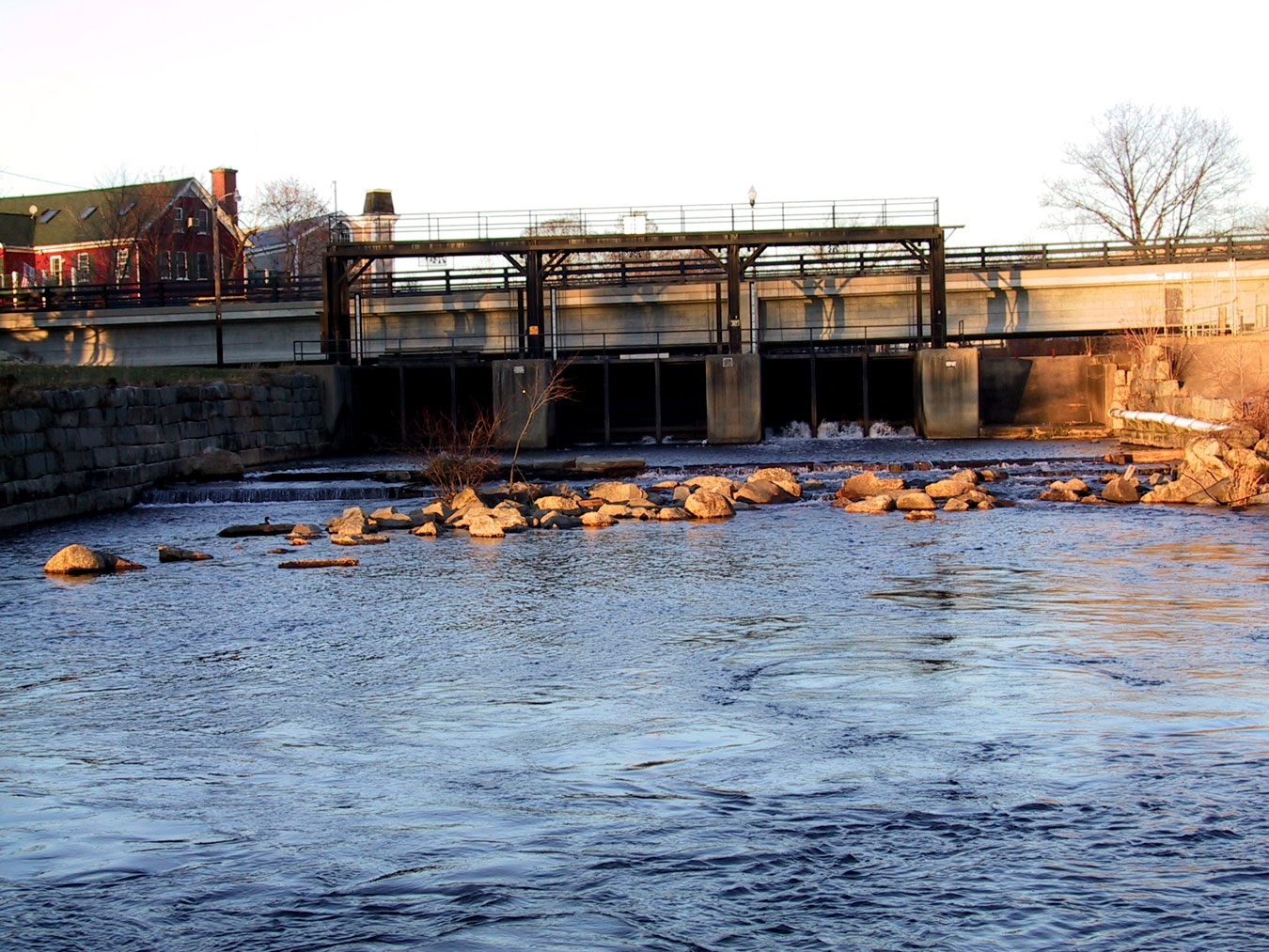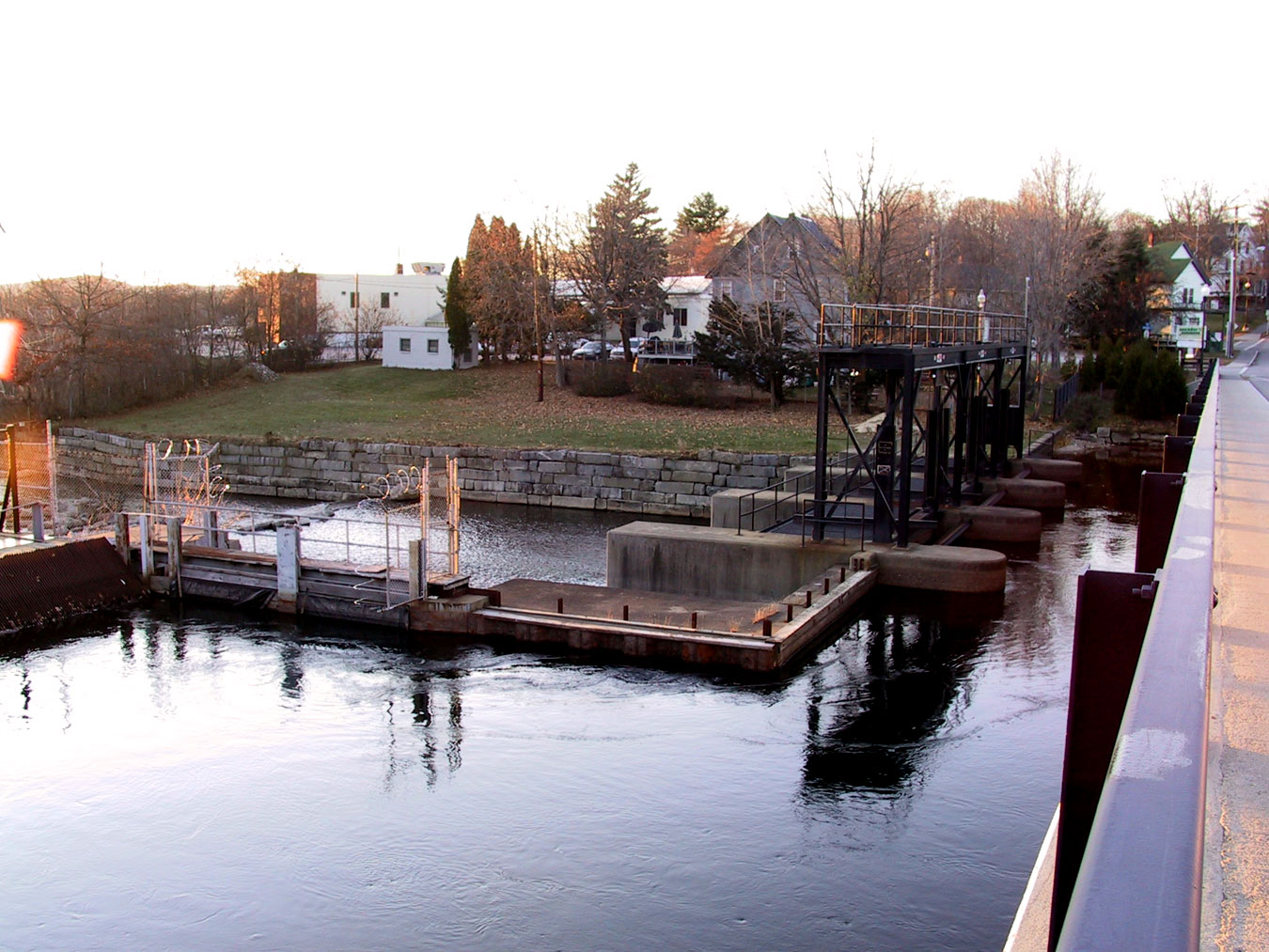The Lakeport Dam
According to an 1816 map, the falls at this location dropped 8 feet 5 inches. (In 1816, Lakeport was known as “Folsoms Bridge”.)
The Lakeport dam on November 21, 2008, looking upstream from the Lake Opechee side. For more information about its “run-of-the-river” hydroelectric power generation capability, click here. The original 200kw power generating facility was a combination hydro and internal combustion plant built by the Laconia Gas & Electric company that was retired in 1932. For extensive information about the operations of the Lakeport dam, click here. Move your cursor over the triangles on the NH map and click on the Lakeport Dam triangle. Or, click on the “List” tab, and scroll down to and then select LKPN3, the code for the Lakeport Dam. Then, click on the “Station Information” tab at the top right.
River Eels
Prior to construction of the hydroelectric portion of the Lakeport Dam in 1984, river eels were migrating from the Lake to the sea, despite all the dams. A 1984 article noted that “in previous year the eels went over the dam…this year they are being channeled through the turbines and the blades are cutting them to pieces.”
According to the New Hampshire Fish & Game Department, “The American eel is another migratory fish species found in New Hampshire. Unlike the other migratory species, the American eel is catadromous, which means that it lives most of its life in freshwater and spawns in the oceans. All American eels spawn at some unknown location in the Sargasso Sea. Each spring, eel larvae travel by the billions from the ocean into freshwater rivers all along the Atlantic coast. Juvenile eels, known as elvers, work their way upstream into freshwater rivers, lakes, and ponds. Juvenile American eels are able to climb wetted surfaces, which has helped eel populations persist despite dam construction. Once they reach their favored destination, they may live for over 20 years before they complete their migration back to the Sargasso Sea. Once considered one of the most abundant fish in New Hampshire waters, American eel numbers have been greatly reduced due to restricted access upstream of dams. Perhaps more importantly, adult eels migrating downstream, known as silver eels, are often killed by hydropower turbines. Biologists with the NH Fish and Game Fish Conservation Program are working to better understand the distribution and abundance of American eels in New Hampshire waters and also to ensure safe and effective upstream and downstream passage at dams throughout the state.”
The Elm Street Bridge
The Lakeport Dam is depicted below on a 1917 postcard. The view is looking downstream from the Paugus Bay side towards the Elm Street bridge, newly built in concrete in 1914. In late November, 2003, a new Elm Street bridge opened, 25′ downstream of the previous bridge. The new bridge was wider, with underground utilities, and aligned Elm Street and Clinton Street.














